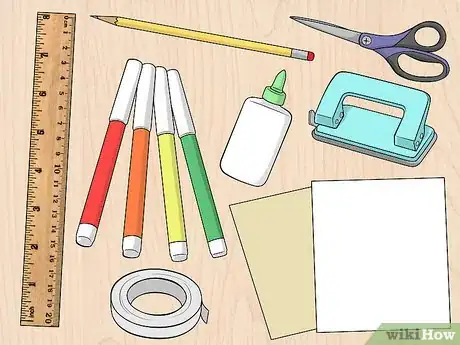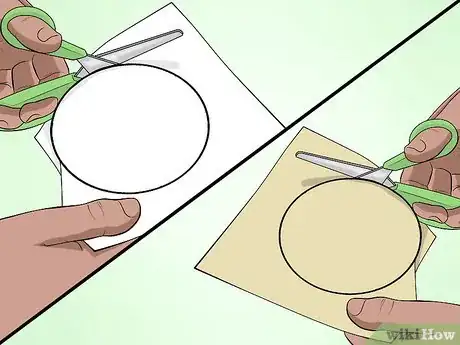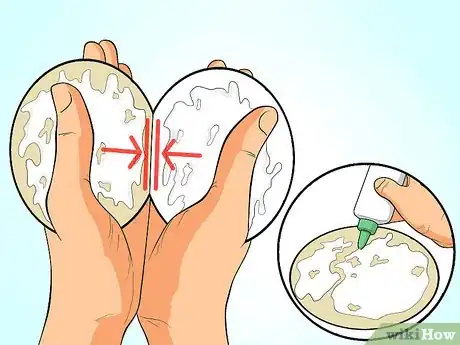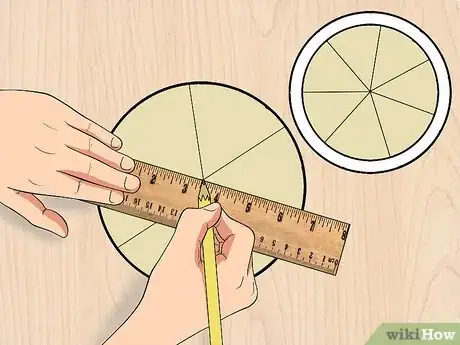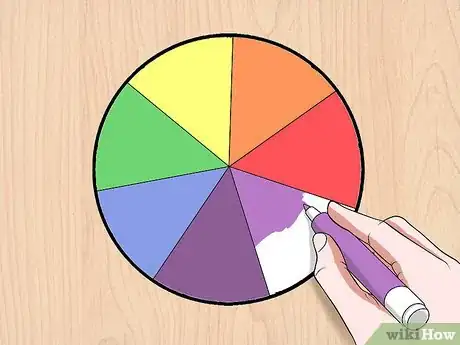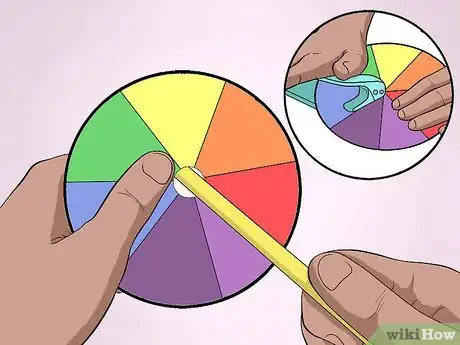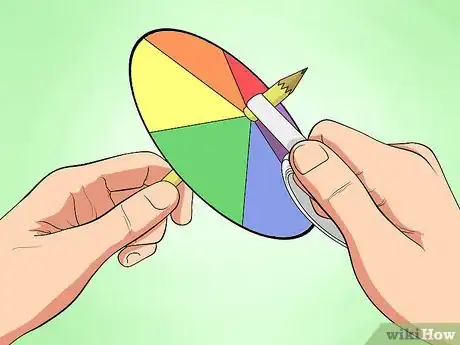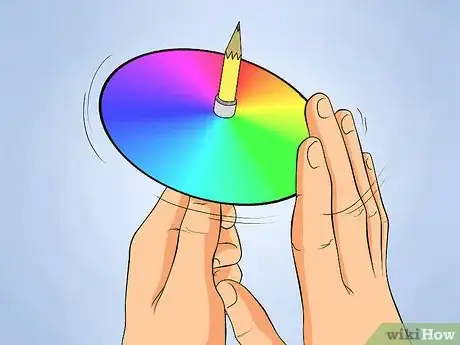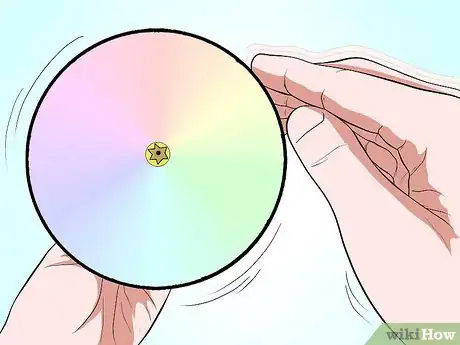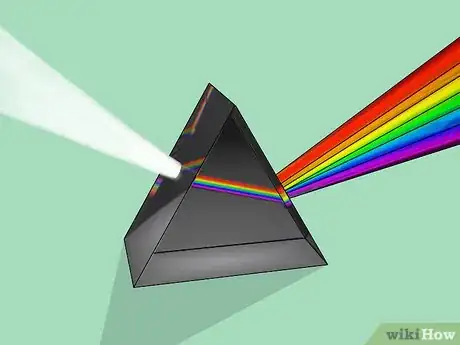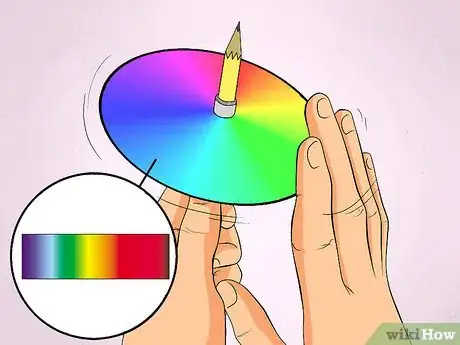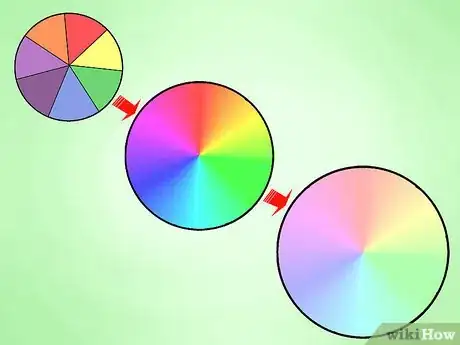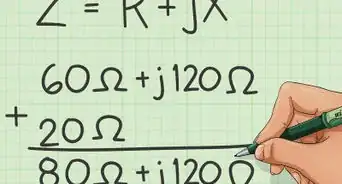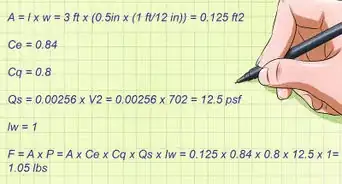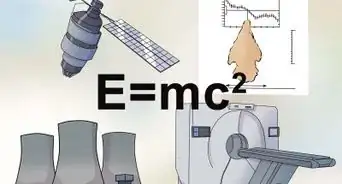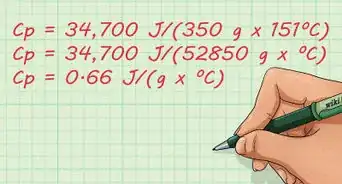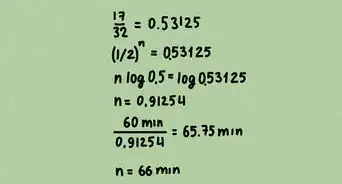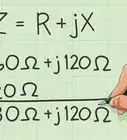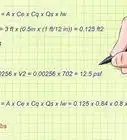This article was co-authored by Bess Ruff, MA. Bess Ruff is a Geography PhD student at Florida State University. She received her MA in Environmental Science and Management from the University of California, Santa Barbara in 2016. She has conducted survey work for marine spatial planning projects in the Caribbean and provided research support as a graduate fellow for the Sustainable Fisheries Group.
wikiHow marks an article as reader-approved once it receives enough positive feedback. This article received 15 testimonials and 84% of readers who voted found it helpful, earning it our reader-approved status.
This article has been viewed 167,235 times.
Isaac Newton is responsible for giving the modern world the information that we use today regarding light and the rainbow. In one experiment, he used two prisms to split a ray of white light into its colored components, and then put it back together into a ray of white light again. A simpler way to show how the different colors come together to make up white light is known as the Newton Disc. This disc can be made by creating a color wheel and spinning it very fast.
Steps
Creating a Color Wheel
-
1Collect the materials that you will need for the project. You will need a standard piece of printer paper, an equivalent sized piece of cardboard, glue, tape, scissors, hole punch, a ruler, a no.2 pencil, and a coloring source. Choose your coloring source. You can choose to color your disc with crayons, markers, colored pencils, or paint. You will need all of the colors of the rainbow: red, orange, yellow, green, blue, indigo, and violet.[1]
- Alternatively, you could choose to print a color wheel from the internet. Try searching online for "color wheel" or "printable color wheel."
-
2Cut the piece of paper and cardboard into equal size circles. To do this you could trace something round with a pencil, use a drawing compass, or print a circle off of the computer. Though it does not matter what size circle you use, it is best to use a circle that would comfortably fit on a standard sheet of notebook paper. The larger your circle is the harder it will be to create the effects of the disc.Advertisement
-
3Glue the piece of paper to the cardboard. If you printed a color wheel from the internet, be sure to glue the color side up. Let the glue dry completely before moving on to the next step.
-
4Divide the circle into seven equal triangles. Use the ruler and pencil to make the lines on the circle. Think about this step as though you are “cutting into a pie.” You are creating a color wheel.[2]
-
5Color each of the seven sections a different color. Start at the top of the circle and work clockwise. Color the sections in with the following colors in this order: red, orange, yellow, green, blue, indigo, and violet.[3]
Using a Newton Disc
-
1Fasten the disc to the pencil. You will need to punch a hole in the middle of the disc. Slide the disc onto pencil. This will give you a way to hold the disc and spin it rapidly.
-
2Hold the disc in place. Put tape around the pencil an inch above and below the disc. This will prevent the wheel from wobbling off of the pencil as it spins. This way, you can spin the disc faster without it flying off of the pencil.
-
3Spin the disc around the pencil. At first you will see the colors quickly spinning. As you spin the disc faster, you will start to see the colors blending, and they will blend together and appear white. If you aren’t seeing this happen, try spinning the disc even faster.
-
4Adjust your technique. If you are still able to see most colors, try spinning the wheel faster. Be aware that you may not see a perfectly white wheel. You are trying to spin the wheel faster than your eyes can process the colors.
Understanding the Science
-
1Look at a prism. A prism is used to split visible light. It separates the light by different frequencies, which appear different in color. Shining a white light through a prism will yield all of the colors of the rainbow (the visible light spectrum).[4]
- If you do not have access to a prism, water can also split light. This can be observed in rainbows.
-
2Study the visible spectrum. Visible light is the small range of electromagnetic energy that the human eye can detect and translate into an image. When the entire spectrum is present, the light appears white in color. When particular frequencies are absorbed, reflected, or otherwise not present, the eye sees different colors, for example red or green.[5]
-
3Consider color combinations. The frequencies that make up the visible spectrum are present on your color wheel. This is why spinning the wheel fast enough to blur those colors together makes them appear white. The light from all of the colors is hitting your eye at almost the exact same time. This tricks the eye into thinking you are seeing white light.[6]
Community Q&A
-
QuestionHow can I make an indigo color?
 Community AnswerYou could mix blue with purple, or add a wee bit of black to shade it.
Community AnswerYou could mix blue with purple, or add a wee bit of black to shade it. -
QuestionHow do I make indigo using watercolors?
 Community AnswerEqual parts blue and red are used to make violet, whereas indigo contains more blue than red.
Community AnswerEqual parts blue and red are used to make violet, whereas indigo contains more blue than red. -
QuestionHow do I make the stand for the Newton disc?
 Community AnswerUse a small pencil or a needle. Some people use small motors with needles on top to make it rotate without using their hands.
Community AnswerUse a small pencil or a needle. Some people use small motors with needles on top to make it rotate without using their hands.
Warnings
- You may need to spin the disc rather fast for this to work well.⧼thumbs_response⧽
Things You’ll Need
- Paper
- Cardboard
- Glue
- Tape
- Scissors
- Hole punch
- Ruler
- Pencil
- A source of colors such as crayons, colored pencils, markers, or paint
References
- ↑ http://www.planet-science.com/categories/experiments/magic-tricks/2010/12/can-you-make-a-rainbow-disappear.aspx
- ↑ http://www.education.com/activity/article/disappearing_color_science_first/
- ↑ http://www.education.com/activity/article/disappearing_color_science_first/
- ↑ http://www.webexhibits.org/colorart/bh.html
- ↑ http://www.webexhibits.org/colorart/bh.html
- ↑ http://www.webexhibits.org/colorart/bh.html
About This Article
To make a Newton disc, start by cutting out two circles of the same size from a piece of cardboard and a piece of paper and gluing them together. Next, divide the circle into 7 equal triangles and color each section a different color in this order: red, orange, yellow, green, blue, indigo, and violet. Then, slide a pencil thorough the center of the disc and wrap some tape around the pencil above and below the disc so it doesn’t slide around. Finally, spin the disc quickly with your hand to see the colors blend together and appear white. For tips from our Science reviewer on how to adjust your technique if you can’t get the disc to appear white, read on!
